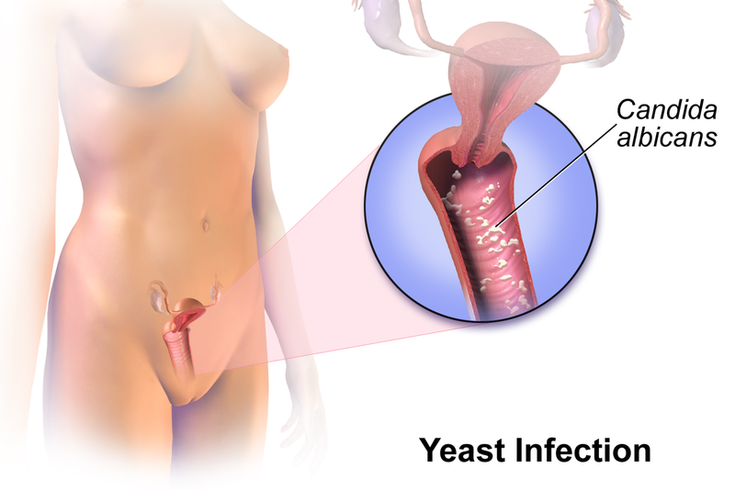
January 27, 2020
 BruceBlaus/Creative Commons via Wikipedia.org
BruceBlaus/Creative Commons via Wikipedia.org
Vaginal candidiasis – a vaginal yeast infection – causes burning, itchiness and a thick white cottage cheese-like discharge. Yeast infections can develop both inside the vagina and on the vulva, causing a burning sensation while urinating or having sex. They're not a sexually transmitted disease, but women become more prone to them after becoming sexually active.
About 3 out of 4 women will experience at least one yeast infection during their lifetimes.
While it's not a life-threatening problem, it's certainly an uncomfortable one. And repeat infections can be a sign of a more serious underlying health issue, such as diabetes.
A vaginal yeast infection is a fungal infection that causes burning, itchiness and a thick white cottage cheese-like discharge. Known as vaginal candidiasis, it also can cause a burning sensation while urinating or during sex.
Yeast infections can develop both inside the vagina and on the external tissue called the vulva. Although not a sexually transmitted disease, women are more prone to them after becoming sexually active.
Here's are the best ways to prevent and treat yeast infections.
According to Women's Health, about 5% of women experience four or more vaginal yeast infections in a single year. Called recurrent vulvovaginal candidiasis, it is more common in women with diabetes or those with weakened immune systems from HIV.
For some women, skin conditions – like repeat yeast infections – are the first sign that they have developed diabetes, according to the American Diabetes Association. Yeast particularly loves to eat glucose so when a woman's blood glucose levels are high, she is more likely to suffer ongoing yeast infections.
Any upset to the balance of bacteria in the vagina also can lead to a yeast infection including antibiotic use, stress, lack of sleep, pregnancy and even menstrual periods.
Yeast infections can be treated with over-the-counter medicine like the topical cream miconazole or prescribed medications like the oral pill fluconazole. If you have diabetes, the best way to prevent repeat infections is to keep your blood glucose levels under control.
A few other prevention tips: Avoid tight-fitting pants and spending too much time in wet clothing. Health experts also advise taking quick showers instead of long, hot baths.
Eating yogurt with the bacteria lactobacillus acidophilus, which is found in a healthy vagina, may also restore the balance of good bacteria, although there is still not a lot of data to definitively confirm this.
But don't put that yogurt anywhere but your mouth. Some women have tried treating a yeast infection by inserting yogurt directly into their vaginas. But Dr. Kathryn Goebel, an obstetrician/gynecologist with Cleveland Clinic, says the natural sugars in yogurt – yes, even in the unsweetened kinds – can just end up encouraging more yeast growth.
Don't try to self-diagnose your first yeast infection, health experts say. That's because something else may be causing your symptoms.
For example, bacterial vaginosis may have similar symptoms, but it's a condition that must be treated with prescription medicine. If left untreated, it can increase the risk for sexually transmitted diseases and pregnancy complications.
Some sexually transmitted diseases also exhibit similar symptoms to a yeast infection. But once you've had a few yeast infections and can better recognize the signs, you can use over-the-counter medicine to treat them.
If your symptoms don't go away with medication, or you develop repeat infections, get evaluated by a gynecologist to rule out other possible health issues.